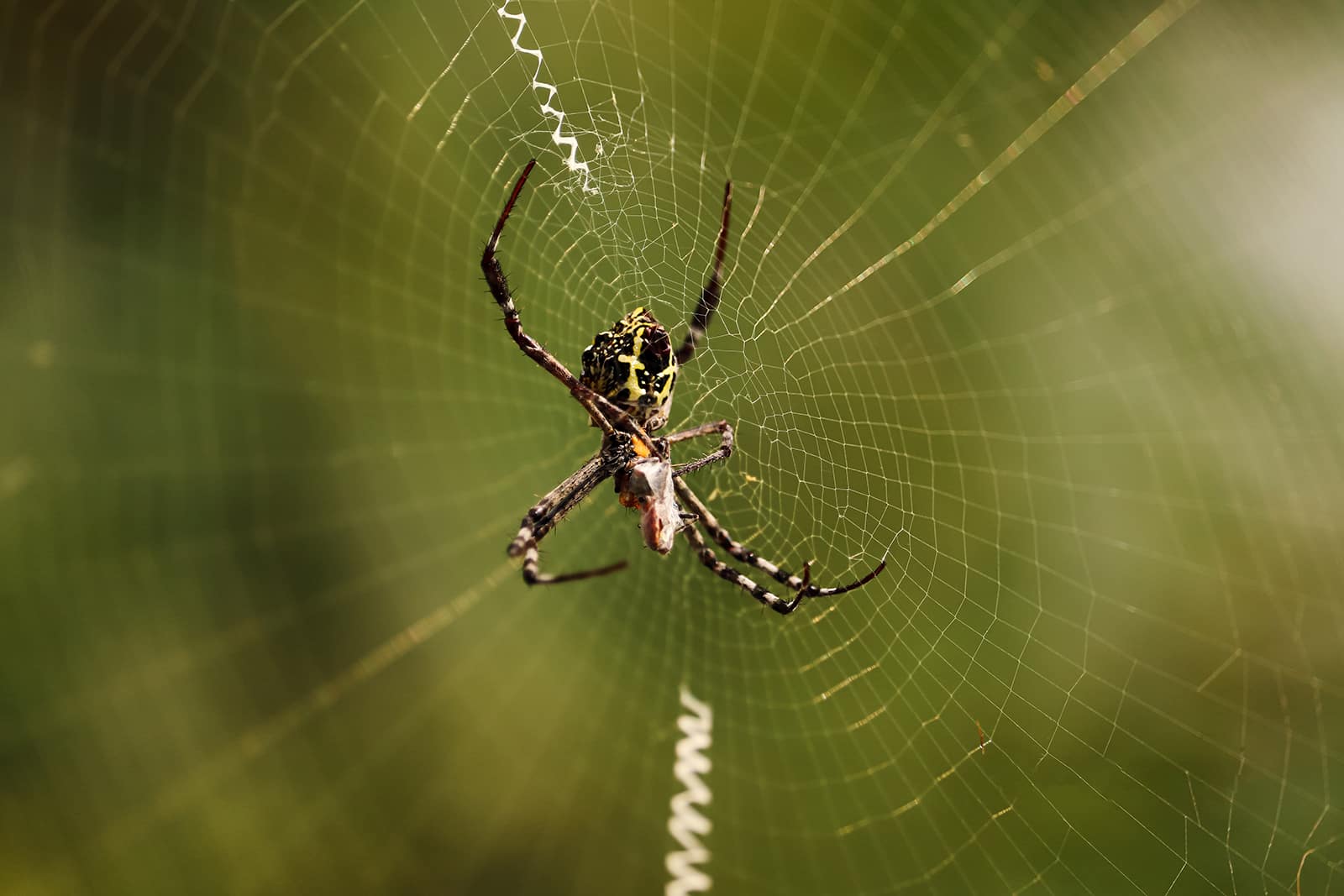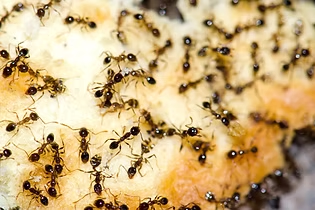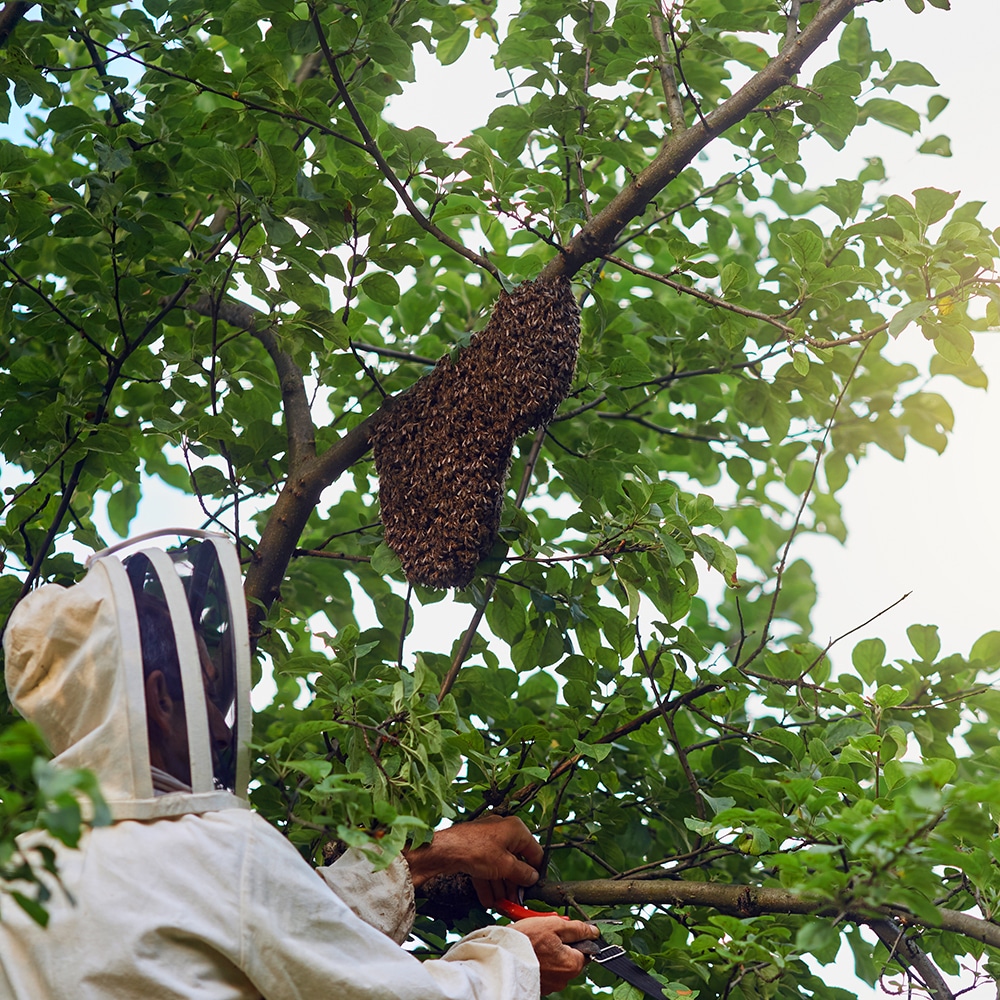
Why Do Spiders Come Back And Why
Why Do Spiders Come Back And Why On The Central Coast NSW. Responsive Proactive Solutions. Detail-focused for lasting results. Call Adam on 0431 222 894
Looking for the Best Ant Baits and Traps and What Works? You’re in the right spot. Ants can be a real nuisance, but with the right approach, you can tackle them effectively. Whether it’s in your kitchen or garden, knowing how to use baits and traps is key. For reliable pest control, check out Vital Pest Control on the Central Coast NSW.
How do ant baits work?
Ant baits lure ants with chemicals they find irresistible. The worker ants carry these baits back to their colonies, sharing them with the queen and other ants. This method ensures the entire colony is targeted, not just individual ants you see. It’s an effective and strategic way to eliminate ant infestations.
The best types of bait for different ant species
Different ants require different baits. Sugar ants prefer sweet baits, while protein-loving ants like meat or peanut butter-based baits. Identifying your ant species ensures you’re using the most effective bait, maximising results and saving time.
Where to place ant bait stations for best results
Place bait stations near ant trails, entry points, and nesting sites. This encourages more ants to find and transport the bait. Look for areas where you see active ant activity for the best results and faster colony elimination.
How long does it take for bait to work?
Bait effectiveness depends on the colony size and type. Generally, it may take several days to a few weeks to notice significant reduction. Patience is crucial, as baits need time to spread through the colony.
Why ant sprays may interfere with baits
Sprays repel ants and can disrupt bait trails. If ants don’t reach the bait, the colony won’t be affected. Use sprays sparingly and away from baited areas to maintain bait effectiveness and ensure success.
How to use gel bait effectively
Gel baits are great for tight spaces. Apply them in cracks and crevices where ants travel. This targets hard-to-reach areas, providing an efficient way to control ant populations without visible mess.
Are natural ant baits effective?
Natural baits can work but may not be as potent as commercial options. Ingredients like borax mixed with sugar can attract and kill ants. They’re safer for homes with kids and pets, offering peace of mind.
How to get rid of ant colonies in walls
Target wall colonies by identifying entry points. Use gel baits to penetrate deep into the nesting areas. For persistent problems, professional help from Vital Pest Control ensures thorough treatment.
Discover how we can help you today!

Ant baits are an effective and strategic solution for controlling ant infestations in Central Coast NSW. These baits work by attracting ants with a mixture of food and slow-acting poison. As ants forage for food, they carry the bait back to their colonies, unknowingly spreading the poison to other ants. This method targets the entire colony, including the queen, ensuring long-term control of the ant population.
Why Ants Are Attracted to Baits
Ants are naturally drawn to baits due to their high carbohydrate and protein content, mimicking their preferred food sources. The slow-acting poison allows ants to return to their nests and share the bait, making it a communal activity. The attraction ensures that more ants consume the bait, increasing its effectiveness in eliminating the colony.
How Ant Baits Target Colonies
The real strength of ant baits lies in their ability to eliminate ants at the source. Worker ants transport the bait back to the colony, where it is fed to other ants and the queen. By targeting the queen, the bait disrupts the colony’s reproduction cycle, gradually leading to its collapse. This method is more sustainable than surface sprays, which only kill visible ants.
Choosing the Right Ant Bait
Selecting the appropriate ant bait is crucial for success. Different ant species have varying preferences, so identifying the type of ant is essential. For instance, some ants prefer sugary baits, while others are drawn to protein-based ones. Using the right bait ensures that ants are enticed and the colony is effectively eradicated.
Ant infestations can be a real headache for homeowners on the Central Coast of NSW. Understanding the best types of bait for different ant species is crucial for effective pest control. Vital Pest Control specialises in identifying ant types and providing solutions tailored to each species. Let’s explore the most effective baits for the common ants in this region.
Argentine Ants
Argentine ants are notorious for their large colonies and adaptability. To tackle these pests, sweet baits with a sugary composition work best. Liquid baits, particularly those with borax, lure these ants effectively. They consume the bait and share it with the colony, ensuring widespread impact. Consistent monitoring and replenishing of baits are essential to eliminate these persistent ants.
Coastal Brown Ants
Coastal brown ants, also known as big-headed ants, prefer protein-rich foods. Gel or granular baits containing hydramethylnon or indoxacarb can be highly effective. These baits target the worker ants, who then distribute the toxin within the colony. Ensuring the bait is placed near trails or entry points can maximise its effectiveness, gradually reducing the ant population.
Black House Ants
Black house ants have a sweet tooth, making sugary gel baits an ideal choice. Baits with fipronil or imidacloprid are particularly successful in controlling these ants. Placement near nests or pathways increases the likelihood of contact. Patience is key, as it may take several days for the bait to impact the colony. Regularly checking and replenishing the bait ensures continuous control.
When dealing with ant infestations, proper placement of ant bait stations is crucial for effective pest control. On the Central Coast of NSW, understanding ant behaviour and their environment can help Vital Pest Control achieve the best results.
Identify Ant Trails
Ants often follow specific trails between their nest and food sources. Observing these trails can guide you to high-traffic areas. Placing bait stations along these paths increases the likelihood of ants encountering the bait, ensuring they carry it back to their colony. This strategy targets the heart of the problem, leading to more efficient extermination.
Near Entry Points
Ants typically enter buildings through cracks, gaps, and other small openings. Positioning bait stations near these entry points is essential. This not only intercepts ants before they spread but also disrupts their ingress. Ensuring these areas are covered can significantly reduce indoor ant activity.
In Humid Areas
Ants are drawn to moisture, often found in kitchens and bathrooms. Placing bait stations in these humid areas can attract more ants, allowing the bait to work effectively. Kitchens, in particular, are hotspots due to accessible food and water sources, making them ideal locations for bait stations.
When tackling an ant infestation, one common question is: how long does it take for bait to work? Understanding this can help set expectations and guide pest control efforts effectively. The time it takes for ant bait to work can vary based on several factors, including the type of bait used, the size of the infestation, and the specific ant species.
Type of Bait
Different baits have varying active ingredients and mechanisms of action. Some baits may start showing results within a few days, while others might take a week or more. Gel baits often allow for quicker colony elimination as ants carry the poison back to their nest. Granular baits, on the other hand, might take slightly longer to spread through the colony.
Size of Infestation
The size of the ant infestation significantly influences how quickly bait works. Larger colonies require more time for the bait to circulate and affect all members. In smaller infestations, results might be noticeable within a shorter period, as there are fewer ants to distribute the bait.
Species of Ants
Certain ant species respond faster to bait than others. For instance, Argentine ants may react quicker due to their aggressive foraging behaviour. Conversely, species like carpenter ants might take longer to be fully eradicated due to their nesting habits and preferences.
Ant sprays and baits are common solutions for ant infestations, but using them together can reduce their effectiveness. Many residents on the Central Coast of NSW have found that understanding how these products interact can make a big difference in pest control success.
Chemical Confusion
Sprays often work by killing ants on contact. While this seems effective, it can interfere with baits. Baits require ants to carry the poison back to their colony. If ants die before reaching the bait, the colony remains unharmed. Sprays can disrupt this process, leaving the core problem unsolved.
Repellent Effects
Many sprays act as repellents, which can drive ants away from bait. If ants smell the spray, they may avoid the area altogether, reducing bait uptake. It’s crucial to use sprays strategically, ensuring they do not deter ants from accessing bait stations.
Timing and Strategy
For effective ant control, timing is key. Use baits first to target the colony. Allow ants to transport the bait back to their nest without interference. Once baiting has reduced the colony, sprays can be used to manage stragglers or prevent new infestations. This strategic approach can improve results for pest control efforts on the Central Coast.
Gel bait is a powerful tool for Vital Pest Control on the Central Coast, NSW, especially when dealing with ant infestations. It offers an efficient way to target pests by exploiting their natural behaviours. Understanding how to use gel bait effectively can enhance your pest control efforts and ensure better results.
Choosing the Right Gel Bait
Selecting the right gel bait is crucial for success. Different ant species are attracted to various food sources. Identify the ant species you’re dealing with to choose a gel bait that caters to their preferences. Sweet-based gels work well for sugar-loving ants, while protein-based gels attract those seeking protein. This targeted approach ensures that the bait is more effective.
Applying Gel Bait Strategically
Application plays a vital role in the effectiveness of gel bait. Place small amounts near ant trails, entry points, and areas where ants are frequently seen. Avoid placing it directly on ant trails as it may deter them. Instead, apply it nearby to encourage ants to discover it naturally, ensuring they carry it back to their colony.
Monitoring and Reapplying
After applying the gel bait, monitor the situation closely. Check the bait regularly to ensure ants are consuming it. If the bait becomes hard or contaminated, reapply fresh bait. Persistence is key, as it might take a few days for the bait to have a noticeable impact. Continued application ensures the colony is thoroughly eliminated.
Natural ant baits have caught the attention of many homeowners on the Central Coast, NSW, seeking eco-friendly pest solutions. The question remains: are they truly effective? Understanding how these baits work and their impact on ant infestations can help residents make informed choices for pest control.
Understanding Natural Ant Baits
Natural ant baits typically use ingredients derived from plant or mineral sources. These include borax, sugar, or essential oils, which are combined to attract and eliminate ants. The effectiveness of these baits lies in their ability to lure ants away from homes and into traps, where they unknowingly carry toxic substances back to their colony.
Benefits of Using Natural Baits
One of the primary benefits of natural ant baits is their safety. They pose minimal risk to pets and children compared to chemical alternatives. Additionally, they often target specific ant species, reducing the likelihood of affecting beneficial insects. For those conscious of environmental impact, natural baits offer a more sustainable solution.
Limitations and Considerations
While natural ant baits can be effective, they may not work as quickly as synthetic options. Patience and consistent application are key. It’s also crucial to identify the ant species present, as certain baits work better on specific types. Consulting with pest control professionals can ensure the right approach is taken for each infestation.
Ants invading your walls can be a nuisance, especially in the Central Coast region where conditions often attract these pests. Understanding effective ways to eliminate ant colonies from walls is crucial for maintaining a pest-free home. This guide aims to provide practical solutions to tackle this issue.
Identify Entry Points
Finding how ants are infiltrating your walls is the first step. Look for tiny cracks or gaps near windows, doors, or pipes. Sealing these entry points can prevent more ants from entering. Use caulk or weather stripping to block their pathways, making sure to inspect regularly for new openings.
Use Bait Stations
Implementing bait stations is an effective way to deal with ant colonies hidden in walls. Place bait near identified entry points. Ants carry the bait back to their nest, eliminating the colony. Ensure baits are fresh for maximum effectiveness and replace them as needed to maintain control.
Call Professional Pest Control
When DIY solutions don’t suffice, it’s time to call in experts like Vital Pest Control on the Central Coast. Professionals can accurately assess the situation and deploy advanced techniques to eradicate ants from your walls. They offer tailored solutions ensuring long-term relief from these persistent invaders.
Ant infestations can be a real headache for homeowners. Knowing if your ant bait is effective is crucial to managing these pests. If you’re on the Central Coast NSW and dealing with ants, it’s important to assess whether your ant bait is doing its job. Here are some signs and tips to help you determine if your ant bait is working.
Reduction in Ant Activity
One of the most noticeable signs that your ant bait is effective is a decrease in ant activity. Initially, you might see an increase in ants as they discover the bait and carry it back to their colony. However, within a few days to a week, you should see fewer ants around your home. This indicates that the bait is being taken back to the colony, impacting the overall ant population.
Visible Bait Consumption
Check the bait regularly to see if it’s being consumed. Effective bait will show signs of use, like less bait visible or ants gathered around it. If there’s no change, consider repositioning the bait to a more trafficked area or trying a different type. Ants might prefer one bait type over another, so experimentation can be key.
Colony Decline
Over time, a successful bait will lead to a noticeable decline in the ant colony. You might find fewer ants in typical nesting sites or see dead ants around the bait. If you notice these signs, your bait is likely doing its job. Persistence is crucial, as some colonies take longer to eliminate, especially larger ones.
Understanding why some ants ignore bait is crucial for effective pest control on the Central Coast NSW. When dealing with an ant infestation, using the correct bait can make or break your pest control strategy. However, if ants are ignoring your bait, it might be time to rethink your approach.
Type of Ant Species
Different ant species have unique preferences. Some favour sweet baits, while others are drawn to protein-rich options. Identifying the species invading your home is the first step. Without this, you might be offering a bait type that does not appeal to the ants you are dealing with. Consider conducting an inspection or consulting a pest expert to pinpoint the species.
Food Preferences and Needs
Ants’ dietary needs change depending on the season and colony life stage. For instance, during colony growth, they might seek protein, whereas mature colonies often prefer sugary foods. If your bait does not align with these needs, ants may walk right past it. Adjust your bait based on observed ant activity and preferences.
Bait Placement
Location is key when setting bait. Ants use pheromone trails to find food, so placing bait along these paths increases your chances of success. If bait is out of their trail or in a location exposed to weather, ants might not find it. Ensuring bait is in a strategic, sheltered spot can make all the difference.
Using ant bait can be a highly effective method for controlling ant infestations, especially for residents on the Central Coast, NSW. However, many make common errors that hinder success. Understanding these mistakes can improve results and keep your home ant-free.
Incorrect Placement of Bait
Placement is crucial when using ant bait. Many mistakenly put bait near ant nests, but the key is to identify ant trails and place the bait along these paths. Bait should be close to entry points like windowsills or doorways, where ants are likely to travel. Proper placement increases the chances of ants finding and carrying the bait back to their colony.
Using Too Much Bait
Overusing bait can be counterproductive. A large amount may deter ants rather than attract them. Small, frequent placements are often more effective as they mimic natural food sources. This approach ensures that ants consume the bait and transport it back to eliminate the colony.
Ineffective Bait Selection
Choosing the wrong type of bait is another frequent error. Ant species vary, and so do their preferences. Some prefer sweet baits, while others are attracted to protein-based options. Identifying the ant species infesting your home can guide you in selecting the most effective bait, ensuring better control outcomes.
Dealing with ants can be a frustrating challenge for homeowners on the Central Coast of NSW. Using borax to create homemade ant bait is an effective, budget-friendly solution that many resort to when commercial options fall short. This method not only helps in keeping ants away but also ensures a safer environment for your family and pets.
Why Borax Works
Borax, a naturally occurring mineral, disrupts the digestive system of ants. When ants consume borax-laced bait, they carry it back to their colony, spreading it among their peers. This process gradually eliminates the entire colony. It’s a proven method that effectively targets the root of the problem rather than just the surface.
Creating the Perfect Bait
To make an effective ant bait, mix sugar, water, and borax. The sugar attracts the ants, while the borax serves as the lethal ingredient. A common recipe involves blending half a cup of sugar with one and a half tablespoons of borax in one and a half cups of warm water. Stir until fully dissolved, then soak cotton balls in the solution for easy placement.
Strategic Placement
Position the soaked cotton balls near ant trails, entry points, or where you’ve observed activity. Placing baits strategically ensures ants find and transport the mixture back to their colony. Regularly replace the baits until ant activity subsides. Monitor and adjust placements as needed for optimal results.
Ant infestations can be a serious concern for businesses on the Central Coast, NSW. Choosing the right commercial-grade ant baits is crucial for effective pest control. These baits not only help manage infestations efficiently, but they also ensure a healthier environment for commercial spaces.
Maxforce Quantum
Maxforce Quantum is a popular choice for pest control professionals. This ant bait offers a highly palatable gel that attracts a variety of ant species. Its delayed-action formula ensures ants transport the bait back to their colony, eliminating the queen and other ants over time. This bait is ideal for commercial environments, providing long-lasting control with minimal disruption to business operations.
Advion Ant Gel
Advion Ant Gel is another effective solution for ant infestations. The gel formulation targets a wide range of ants, including Argentine and carpenter ants. Its active ingredient works efficiently, ensuring ants spread the bait within their colony. For businesses, this means a reduction in visible ant activity and eventual control of the entire colony. Advion’s gel is easy to apply, making it a practical option for commercial settings.
Optigard Ant Bait Gel
Optigard Ant Bait Gel offers a potent solution for persistent ant problems. This bait utilises a unique formulation that targets ants without affecting non-target species. Its clear, odourless gel can be applied discreetly in various commercial environments. Optigard is particularly effective in areas like kitchens and dining spaces, where food safety is paramount. This bait ensures thorough control while maintaining a clean and safe business environment.
Incorporating baiting with other pest control methods can enhance effectiveness, particularly for ant infestations on the Central Coast of NSW. By combining various strategies, you can tackle the problem from multiple angles, ensuring a more comprehensive solution.
Utilising Physical Barriers
Physical barriers can complement baiting by preventing ants from accessing your home. Seal all entry points, including cracks and crevices around windows and doors. This approach limits the ants’ pathways, making the bait more attractive as their food sources reduce. By combining these techniques, you create a more hostile environment for ants, pushing them towards the bait stations.
Incorporating Natural Deterrents
Natural deterrents, like essential oils, can be used alongside baiting to enhance pest control. Oils such as peppermint or tea tree can be sprayed around your property to deter ants while allowing bait stations to work effectively. This dual approach reduces ant populations by repelling them from some areas and luring them to the bait.
Regular Monitoring and Adjustments
Consistent monitoring ensures that your baiting and control strategies are working. Check bait stations regularly and replace them as needed. Observing ant activity helps you tweak your methods, ensuring you’re using the most effective solutions. This proactive approach enables you to stay ahead of the infestation and adapt to changing conditions.
Ant infestations can be frustrating, especially when they invade your home or garden. For residents on the Central Coast NSW, using ant baits is a practical solution. However, the effectiveness of these baits depends on timely replacement. So, how often should you replace ant baits for optimal results?
Understanding Ant Bait Longevity
The lifespan of ant baits varies based on several factors. Weather conditions, moisture, and the type of bait used can all impact how long they remain effective. In humid environments like the Central Coast, baits may degrade faster, requiring more frequent changes. Generally, inspect and replace baits every three to four months.
Monitoring Ant Activity
Keep a close eye on ant activity around your bait stations. If ants stop visiting the bait, it might be time to replace it. Ants can deplete the bait quickly, especially if the infestation is large. Regular monitoring ensures you’re not leaving ineffective baits in place.
Signs of Bait Deterioration
Visible signs of bait deterioration include mould growth, discolouration, or a foul smell. These indicate that the bait is no longer attractive to ants and should be replaced. Always check for these signs, especially after rain or high humidity.
By understanding these factors, you can effectively manage ant bait replacement, ensuring your home remains ant-free with minimal effort.
Please leave your details in the form and we will call you back the same day.
So that we can process your enquire efficiently please leave as many details as possible and upload any relevant images. (.jpg and .png format)

Why Do Spiders Come Back And Why On The Central Coast NSW. Responsive Proactive Solutions. Detail-focused for lasting results. Call Adam on 0431 222 894

Building a Long Term Residential Pest Protection Plan For Home Owners On The Central Coast NSW. Responsive Proactive Solutions. Detail-focused for lasting results. Call Adam on 0431 222 894

How to Protect Your Home from Wasp Infestations On The Central Coast NSW. Responsive Proactive Solutions. Detail-focused for lasting results. Call Adam on 0431 222 894